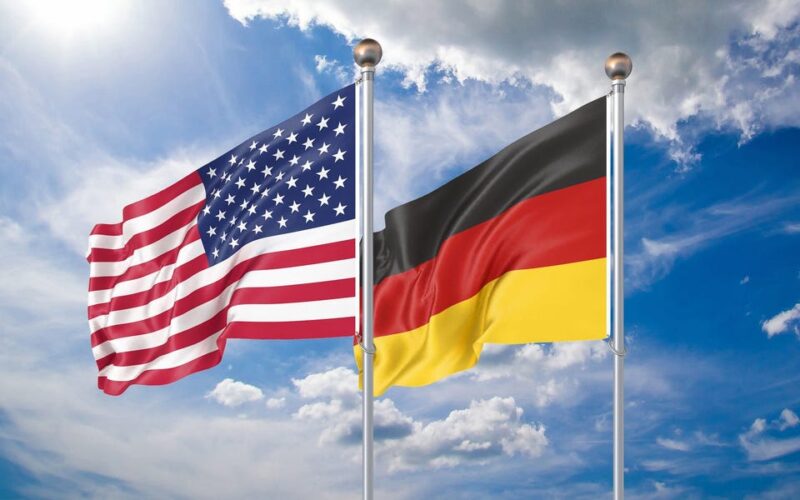China has been Germany’s top trade partner for the last eight years, but something has shifted this year — the US could be moving into the top spot.
Trade between the US and Germany was 63.2 billion euros in the first quarter of 2024, edging out the 60 billion euros of trade between China and Germany, according to data from the German government.
While the gap is relatively small and the data is only for January through March, it highlights an underlying trend: Trade dynamics are shifting as geopolitics and competition influence new tariff policies and the international flow of goods.
Amid conflicts like the Russia-Ukraine war and concern over China’s overproduction of goods like electric vehicles and solar panels, trade between the West and China is coming under increased scrutiny – and Germany’s economic ties to China exemplify the shift.
Electric vehicles are causing rifts
Automobiles are at the center of a new dispute between China and Germany. The European Union recently imposed tariffs up to 38.1% on Chinese electric vehicles, following the Biden administration’s decision to impose 100% tariffs on Chinese EVs.
The tariffs counter what European officials say are unfair advantages from Chinese government subsidies that bolster Chinese EV production. According to Bloomberg, the Chinese EV industry has received up to $231 billion in government subsidies since 2009.
According to the European Commission, the number of Chinese cars sold in the EU increased from less than 1% of the market in 2019 to 8% in 2023.
The number of Chinese EVs sold in Germany increased nearly tenfold from 2020 to 2023. From January to April, according to government data, about 41% of Germany’s imported EVs came from China.
On the other hand, German car companies like BMW, Porsche, and Volkswagen rely heavily on the Chinese market. Nearly a third of German car sales in 2023 came from China, according to Reuters, leaving the industry vulnerable to a trade war.
Robert Habeck, Germany’s economy minister, visited Beijing over the weekend to discuss trade with Chinese officials. According to Reuters, he was the first senior European leader to visit China since the EU announced its tariffs.
During Habeck’s visit, Chinese officials said they hope the EU will drop their tariff proposals. Bloomberg reported China is even considering luxury perks for German automakers in a bid to persuade the government to ease tariffs.
Previously, China has taken a retaliatory stance, launching probes into French brandy and Spanish pork imports — steps that tend to precede tariffs.
China’s support for Russia and supply chain problems bolstered tensions
German government data released Friday revealed a 14% decline in German exports to China in May year-over-year, while exports to the US increased 4.1% during the same period.
The slump in German exports to China is a sign of vulnerability in trade relations, according to the FT.
In 2022, trade between China and Germany was 50 billion euros greater than that between Germany and the US. In 2023, that margin decreased to 0.7 billion euros, according to government data.
Habeck said China’s support for Russia’s war in Ukraine is the main reason the nations’ economic ties have faltered, Bloomberg reported.
Trade between China and Russia reached a record $240 billion in 2023. Meanwhile, according to a survey by the European Union Chamber of Commerce in China, just 13% of EU companies see China as a top investment destination.
Still, according to a report by the Atlantic Council, a think tank, a European decoupling from China is far from materializing, and Germany’s economic ties to Beijing remain strong.
Trade data can change from month to month, and some economists said May’s decline in German exports to China should not be examined too closely, as monthly numbers can differ before a long-term trend.
Oliver Rakau, an economist at Oxford Economics, told the FT that the decline in German exports is also affected by other issues, such as supply chain delays due to conflict in the Red Sea.
US trade policy is clear
While changes in trade between Europe and China are less certain, in the US, Trump and Biden have different approaches to the same goal: protecting American manufacturing through tariffs on China.
Notably, Biden’s tariff hike on Chinese EVs coincides with his goal for electric vehicles to make up half of new US sales by 2030.
Only 0.4% of Chinese EV exports by value from January to April went to the US, according to Bloomberg, and major Chinese EV companies like BYD do not sell cars in the US.
In effect, the Biden administration’s 100% tariff is a preventative measure to shut Chinese EVs out of the US market.
According to Martin Wolf, the FT’s chief economics commentator, the use of industrial policy — like tariffs — has risen significantly in past years, highlighting a new era of government intervention in trade.
According to Bloomberg, 37% of China’s EV exports by value from January to April went to the EU.
According to Reuters, Chinese and European officials will meet in Brussels this week to discuss trade further, deciding whether to follow the US course of stiff tariffs or chart a more lenient path.
While tariff debates in the West ensue, China’s EV production continues — and there’s certainly demand from the rest of the world.
Source link
lol

